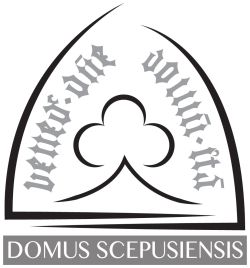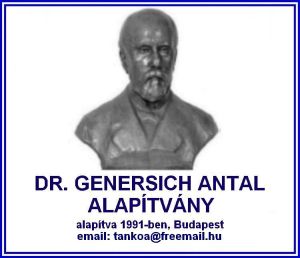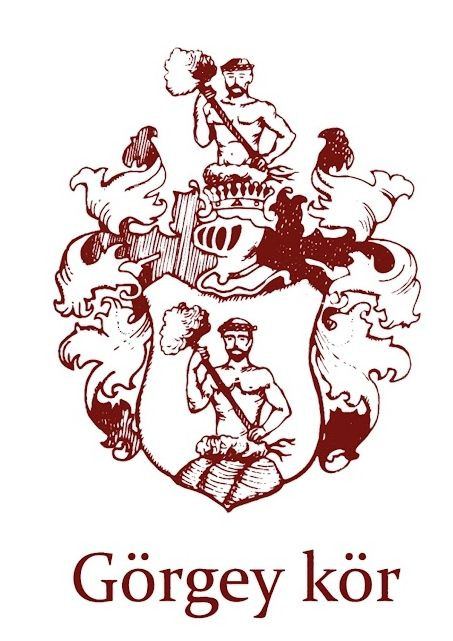Dercsényi János (1755-1837), orvos és természetbúvár, Weisz János lőcsei ev. lelkész fia
Významný lekár a prírodovedec János Dercsényi
The excellent medical doctor and naturálist János Dercsényi
Der Arzt und Naturwissenschaftler János Dercsényi
Dercsényi Weisz János
Címke: Dercsényi
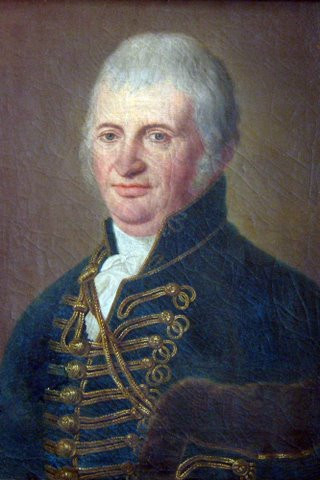
Dercsényi János (1755-1837), orvos és természetbúvár élete
Kazinczy sógora, Zemplén főorvosa: Dercsényi János
A 18-19. század fordulójának jeles orvosa és természetbúvára, Dercsényi - eredeti nevén: Weisz - János Szepesszombatban (ma Spišská Sobo¬ta, Szlovákia) született 1755. május 16-án. Lőcsei és pozsonyi előta-nulmányok után Becsben, M. Stoll professzor tanítványaként szerzett orvosi oklevelet „a láztudományról” (Pyretologia) írt értekezésével 1780-ban. 1783-ban nemcsak e disszertációját adta ki újra, hanem „a gyulladásos lázakról” addig gyűjtött tapsztalatait is. Ekkor már Zemp¬lén vármegye főorvosa (fizikusa) és 1802-ig főleg a járványos kórok (lépfene) ill. a szegénysorsú lakosság körében dúló skorbut megféke¬zésében jeleskedett. Az elsők közt kórboncolt Magyarországon (1783- ban). Mivel orvosi fennhatósága alá tartozott a tokaji borvidék, maga is szőlész-borász lett és e téren szerzett tapasztalatait 1796-ban német nyelven tette közzé. A rövidesen magyarul is kiadott „A Tokaji Bornak termesztéséről, szűréséről és forrásáról” c. munka az új, Lavoisier nevé¬vel fémjelzett vegyi ismeretek egyik első magyarországi meghonosító¬ja. E kötet „geognosztikai” (geológiai) toldaléka már jelezte Dercsényi érdeklődését a földtani kérdések iránt is. Ez irányú érdeklődősének köszönhetően Bereg megyei birtokán tekintélyes timsótelepet fedezett fel, amely nemcsak gazdaggá tette őt, de pályamódosításra is sarkallta: feladva főorvosi posztját előbb „technológusként”, majd a Schönborn grófi uradalom elöljárójaként működött. 1831-ben azonban újra orvosi ismereteit kamatoztatta, mint Bereg vármegye kolera-elleni bizottsá¬gának tagja.
1785-ben nősült, felesége a nyelvújító, író Kazinczy Ferenc húga, Júlia lett. Talán Kazinczy hatása is közrejátszott abban, hogy a cipszer (német) gyökerű Dercsényi Öregkorában már csak magyarul publikált és kapcsolatot létesített az 1830-tól működő Magyar Tudós Társasággal (az Akadémiával). A Társaság folyóiratában a bányákról, az időjárás tudományáról és az artézi kutakról értekezett. Nagyközönségnek szánt felvilágosító írása a „színholtakról” (tetszhalottakról) a kor olvasott lapjának a Társalkodó-nak hasábjain jelent meg 1836-ban.
Kéziratban maradtak a kor fontos járványos betegségeiről írott dolgozatai ill. a magyarországi terményekről és ipari cikkekről írt könyve. Ez utóbbinak csak a magyar és külföldi borok összehasonlí¬tásával foglalkozó fejezete jelent meg 1825-ben a Tudományos Gyűjte¬mény hasábjain. Egyik kortársa szerint dolgozott a magyar bor össze¬foglaló monográfiáján is.
Dercsényi 1837. június 27-én hunyt el Munkácson. Életműve nagyrészt feledésbe merült - több kézirata csak a közelmúltban buk¬kant elő - s többnyire csak a híres ember (Kazinczy) rokonaként tar¬tották számon. E kis kötet megírásának fő indítéka az volt, hogy a friss kutatások alapján bizonyítsa: Dercsényi nem szorul ilyen „rokoni támo¬gatásra”. Személyisége, életműve, sokoldalúsága - a Kazinczy-sógorság nélkül is - a 18-19. századforduló egyik érdekes szereplőjévé avatja Őt.
Životopis
Švagor Kazinczyho, lekárom Zemplínske: dr. János Dercsényi
Významný lekár a prírodovedec prelomu 18-19. storočia, János Dercsényi - pôvodným menom: Weiss - sa narodil 16. mája 1755 v Spišskej Sobote. Po predchádzajúcich štúdiách v Levoči a Bratislave, diplom lekára získal ako žiak M. Stolla vo Viedni r. 1780 dizertáciou „o vede o horúčke“ (Pyretologia). R. 1783 vyšlo nielen nové vydanie tejto rozpravy, ale vydal aj svoje skúsenosti o „horúčkach zápalového pôvodu“. Vtedy je už hlavným lekárom (fyzikusom) Zemplínskej župy, zostáva ním do r. 1802 a dosiahol úspechy hlavne v potlačení epidemických chorôb (antraxu) resp. Škorbutu, vyskytujúceho sa medzi chudobnými lúd’nii. Medzi prvými v Uhorsku (r. 1783) robil patologicko-anatomické pitvy. A pretože v jeho lekárskom rajóne sa nachádzala aj tokajská vinárska oblasť, a sám sa stal vinárom, svoje skúsenosti, získané na tomto poli uverejnil r. 1796 v po nemecky pisa nej knihe. Kniha pod názvom „ Ueber Tokay s Weinbau, dessen Fessung und Gährung“ behom krátkej doby vyšla aj v maďarčine a stala sa jednou z prvých knih, popularizujúcich poznatky z novej chémie, spojenej s menom Lavoisiera. „Geognostický“ čiže geologický dodatok knihy už naznačil záujem Dercsényiho aj o otázky geológie. Vďaka tomuto záujmu, objavil na svojom majetku v Berežskej župe rozsiahle náleziská kamenca, Čo ho urobil nielen bohatým, ale inicioval uňho aj zmenu povolania: abdikoval z postu hlavného lekára a pracoval najprv ako „technológ“, potom ako prefekt panského majetku grófa Schônborna. R. 1831 však profitoval znovu zo svojich lekárskych znalostí, ako Člen proticholerovej komisie v Berežskej župe.
R. 1785 sa oženil, jeho manželka bola sestrou jazykovedca a spisovateľa Ferenca Kazinczyho. Možno, že aj pod vplyvom Kazinczyho, Dercsényi s nemeckými koreňmi vo svojej starobe už publikoval len maďarčine a nadviazal kontakt s od r. 1830 fungujúcou Akadémiou vied Uhorska. V časopise Akadémie publikoval rozpravy o baniach, o meteorológii, a o artézskych studniach. Jeho osvetovo zameraný článok, určený pre ľud „o zdanlivo mŕtvych“, vyšiel na stránkach populárneho Časopisu Társalkodó r. 1836.
V rukopise zostali jeho rozpravy o dôležitých epidemických chorobách resp. kniha o poľnohospodárskych resp. priemyselných produktoch Uhorska. Z tohoto rukopisu vyšla len kapitola, porovnávajúca uhorské vína so zahraničnými na stránkach časopisu Tudományos Gyűjtemény, r. 1825. Podľa tvrdenia jedného súčasníka, pracoval aj na veľkej monográfii o uhorskom víne.
Dercsényi zomrel v Mukačeve 27. júna 1837. Jeho životné dielo upadlo do zabudnutia - mnohé jeho rukopisy boli objavené až nedávno - a spomínali na neho len ako na príbuzného iného slávneho človeka, Kazinczyho. Dôvodom k napísaniu tejto malej knižky bol cieľ: na základe najnovších výskumov dokázať, že Dercsényi nie je odkázaný na takúto „príbuzenskú podporu“. Jeho osobnosť, životné dielo, jeho všestrannosť - aj bez švagrovstvo s Kazinczym - ho robia jednou zo zaujímavých osobností prelomu 18-19. storočia.
Dr. János Dercsényí (Johannes Weisz):
Brother-in-law of Ferenc Kazinczy, chief physician of Zemplén county
János Dercsényí (born Johannes Weisz) - the excellent medical doctor and naturálist of the turn of the 18-19. century - was born in Upper-Hungary on May 16d* 1755; plače of birth: Szepesszombat (Poprad-Spišská Sobota/ Slovakia). After his preliminary studies in Lőcse (Levoča) and Pozsony (Bratislava), he received a Doctors’s Certificate in Vienna as a študent of Professor M. Stoll. He wrote his dissertation on the science of fever (Pyretology) in 1780. In 1783 he republicated his dissertation extended by the experiences he had made about inflammatory fever diseases. At this time he was the chief medical surgeon and physicist of Zemplén county, he excelled in contagious diseases (anthrax) and scorbute control which was spreading among the poor. In 1783 he became one of the first pathological anatomists in Hungary.
As the Tokaj wine region was under his medical supervision, he became a wine grower and wine maker. Including in his experiences he published in Germán. The Hungárián version of this publication - titled „Cultivation, vintage and fermentation of Tokaj wine” - appeared soon after. This work was the first Hungárián publication of ídeas borrowed from Lavoisier’s hallmarking chemical experiences. The „Geognostic” appendix of this book showed Dercsényi’s intererest in geological questions. Owing to this interest he discovered a large alum quarry in his estate in Bereg county. This find made him wealthy and convinced him to change his profession as well. He gave up his medical carreer and became a technologist. In this function he was employed as the principál on count Schönborn’s domain. In 1831 he again made use of his medical knowledge when he became a member of the anti-cholera commíttee of Bereg county.
In 1785 he married Júlia. His wife was the sister of the well known writer and neologist Ferenc Kazinczy. Perhaps it was Kazinczy s influence that inspired Dercsényí in the declining years - despite his Germán roots - published in Hungárián language only. He alsó estabüshed a close relationship to Hungárián Academy of Science. In the Academy’s periodicals he disserted on mining technology, meteorology and artesian wells. In 1836 his informative essays about the apparent death, appeared in the popular magaziné „Társalkodó”.
His dissertations on epidemic diseaes as well as his book about Hungary’s agricultural and industrial products remained just a manuscript. Only one chapter - dealing with a comparison of Hungárián and imported wines - was published in 1825. According to one of his contemporaries Dercsényi started to write a comprehensive monograph on Hungárián wines.
Dercsényi died in Munkács (Mukacevo/Ukraine) on June 27th, 1837. Most of his life-work has been forgottén, somé of his manuscripts have appeared just recently. He was and is known as a close relatíve of the distinguished and honourable Kazinczy. The main motive of issuing this book is to prove - based on new research - that Dercsényi does nőt need this „family supporť’at all. His personality, life-work and versatility make him one of the most interesting persons of his time.
Dr. János Dercsényi (Johannes Weisz):
Oberarzt des Komitat Zemplén, Ferenc Kazinczy’s Schwager
Dér zűr Wende vöm 18. ins 19. Jahrhundert als ausgezeichneter Arzt und Naturwissenschaftler bekannte János Dercsényi - ursprünglich Johannes Weisz - wurde am 16. Mai 1755 in Georgenberg (ungarisch: Szepesszombat; slowakisch: Spišská Sobota) geboren.
Nach den Vorbereitungsstudien in Leutschau (Lőcse, Levoča) und Pressburg (Pozsony, Bratislava), erhielt er 1780 als Študent bei Professor M. Stoll in Wien das Arztdiplom für seine Dissertation über fiebrige Erkrankungen (Pyretologie). lm Jahre 1783 veröffentlichte er erneut seine Doktorarbeit, erweitert um die bis dahin gesammelten Erfahrungen über entzündliche Fiebererkrankungen.
Zu dieser Zeit bekleidete er bereits die Position des Oberarztes im Komitat Zemplén und zeichnete sich bis 1802 hauptsächlich bei seuchenartigen Erkrankungen (Milzbrand), sowiebeiderEindämmung des in dér armen Bevölkerung grassierenden Skorbuts aus.
1783 gehörte er zu den Ersten die in Ungarn Obduktionen vornahmen. Da das Tokaier Weinanbaugebiet zu seinem arztlichen Verantwortungsbereich gehörte, wurde er selbst zum Winzer (Reben- und Weinfachmann) dér 1796 seine auf diesem Gebiet gemachten Erfahrungen veröffentlichte. Durch seine bald darauf in Ungarisch herausgegebene Arbeit mit dem Titel „Über Tokay’s Weinbau, dessen Fechsung und Gährung” (A Tokaji Bornak termesztéséről, szűréséről és forrásáról), hat er das mit dem glänzenden Namen Lavoisier verbundene, neue chemischen Wissen in Ungarn eingeführt und bekannt gemacht.
Dieses wissenschaftliche Werk zeigte Dercsényis Interessé für „geodiagnostische” (geologische) Fragen. Mit diesem Interessé, entdeckte er die beträchtlichen Alaunlagerstatten im Komitat Bereg, die ihn nicht nur wohlhabend machten sondern auch seine weitere Laufbahn beeinflusste. Er quittierte seine Oberarztposition und arbeitete zunáchst als führender Technologe auf den Gütern des Gráfén Schönborn. Als Mitglied des Cholera-Komitees im Komitat Bereg, konnte er 1831 erneut seine medizinischen Kenntnisse einbringen.
1785 ehelichte er Júlia, die Schwester des Schriftstellers und Spracherneuerers Ferenc Kazinczy. Vielleicht war es Kazinczys Einfluss, dass dér ursprünglich deutschsprachige Zipser Dercsényí nur noch ungarisch publizierte, und eine Verbindung zu dér seit 1830 wirkenden Ungarische Akadémie dér Wissenschaft („Magyar Tudományos Akadémia”) zu Standé kam. In den Magazinén dieser Gessellschaft waren seine Beiträge über den Bergbau, über die Wissenschaft dér Meterologie, sowie artesische Brunnen zu finden. In den Spalten dér seinerzeit viel gelesenen Zeitschrift „Társalkodó”, - damít auch die breite Öffentlichkeit ansprechend - erschienen 1836 seine aufklärenden Artikel über den Scheintod.
Nur handschriftlich blíeben seine über die zu seiner Zeit seuchenahnlichen Erkrankungen verfassten Arbeiten, ebenso seine Niederschriften über ungarische Produkte sowie industrielle Erzeugnisse. Bei dem Ersteren befasste er sich u. a. mit dem Vergleích ungarischer und ausländischer Weine, dér 1825 in den Spalten dér Wissenschaft lichen Sammlung („Tudományos Gyűjtemény”) erschien. Gemäfí eines seiner Zeitgenossen, arbeítete er auch an einer zusammenfassenden Monographie über den ungarischen Wein.
Am 27. Juni 1837 verstarb Dercsényi in Munkács (Mukacevo, Ukraine). Sein Lebenswerk ist gröBtenteils in Vergessenheít geraten, mehrere Handschriften tauchten erst in dér nahen Vergangenheit auf. Leider registierte mán ihr weiterhin nur als Verwandten seines berühmten Zeitgenossen Kazinczy. Die Absicht dieses kleinen Bandes ist - basierend auf neueren Forschungen - aufzuzeigen, dass Dercsényi nicht auf eine „verwandschaftliche Unterstützung” angewiesen ist. Seine Persönlichkeit, Vielseitigkeit sowie sein Lebenswerk, - auch ohne seinen Schwager Kazinczy - macht Ihn noch heute zu einem interesanten Menschen seiner Zeit.
Képek
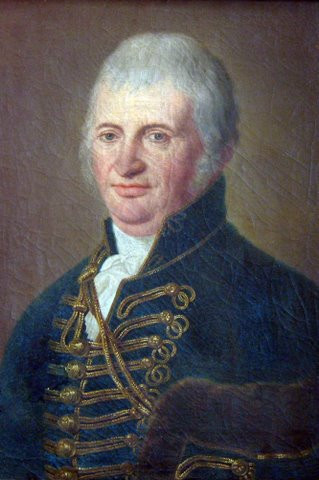
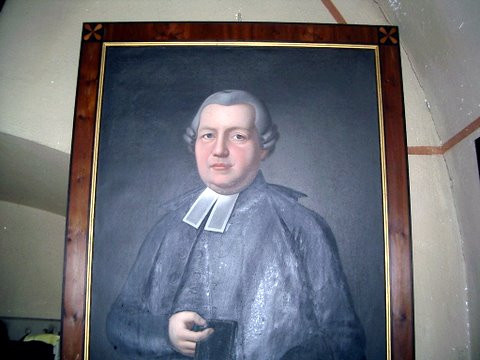
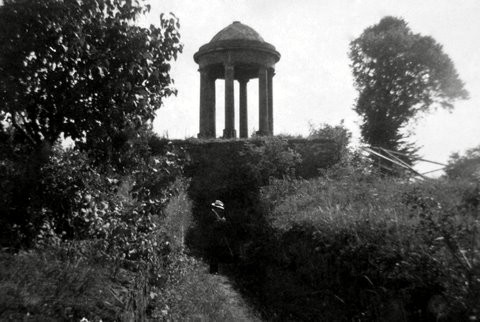
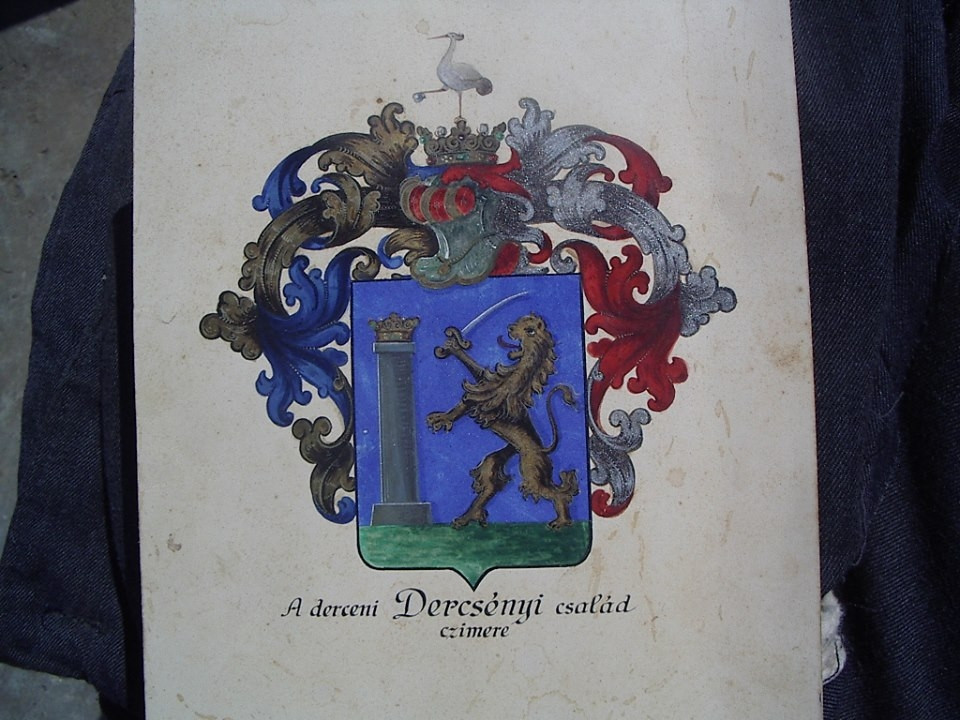
Ajánló
Arcképcsarnok
Jeles személyiségek
Visszaemlékezések, archív felvételek
Emlékhelyek és sírjegyzékek
Szepesi estek és hazai események
Szepességi látogatások
Hirdetés
hirdetés helye






















